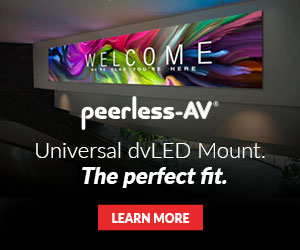
So, I need to upgrade my ride and decided that I need a 4WD, Crew Cab Dually, 1-Ton pickup with Leather interior and a towing package. Budget is $10K.
ROTFLOL.
Where did you get that dollar figure from? 40 years ago? Someone is stuck in a time warp. Audiovisual projects are often approached the same way – starting with an often unrealistic dollar figure.
I know someone familiar with a new House of Worship project with suggested donation amounts for some of the furniture and fixtures. Big donation amounts. This person asked me to guess what they budgeted for AV. Because of how they phrased the question, I guessed a ridiculously low number. “$20K”, I said. Nope. It was $15K. Including installation. I guess that’ll be a TV, a couple of hardwired mics and two powered loudspeakers. At least they’ll be decent powered loudspeakers, I guess.
I had another recent request for a digital mixer with 24 mic inputs for “around $1000”.
All three of these scenarios have unrealistic expectations but only the first one is made up.
Here’s another real scenario with a different twist: “Will need a relatively quick turn-around – they are looking to move in within the next few weeks.” Oh, and the drywall is going up in the next couple of weeks. But it’s okay as I’m told the GC is putting in some access holes. </sarcasm>
For this job, there’s no design, no Functional Scope, no Bill of Materials. Nothing. They’re not even sure what they’re trying to do yet. The expectations here are also unrealistic as you won’t even be able to get all the equipment “within in the next few weeks” even if you ordered today. And will any of those supposed access holes even be useful? We have all been through this before.
I’m sure the furniture was picked out and ordered a long time ago – including any custom furniture. Someone planned and ordered the phone system. The Telecommunications Room was on the architectural floor plans from the beginning. The fire alarm system certainly wasn’t a last-minute consideration. “We move in in four weeks. We probably need to get a quote on the fire alarm system we need.” That sounds ridiculous, doesn’t it.?
Why is it then, that audiovisual is still clamoring to get recognition and a seat at the Big Kids’ Table?
Two things, in my opinion:
- I think we can only blame ourselves for the lack of perceived value that we bring to a project. We’ve given away designs, worked nights, weekends, 2-3 days without sleep, fixed stuff that wasn’t our responsibility and given away time and equipment just to meet a deadline or make a client happy. What other normal business does that to themselves?
- I’ve been around this industry for getting close to four decades and I think we’re great at promoting ourselves to ourselves but hardly anyone outside of our little AV Club knows we even exist. For most of us, we have trouble defining “audiovisual” when someone asks us what we do. We love our little Club, and we love the people we know in the Club but we need a serious outreach effort to technology decision makers and the other design teams that are part of every building project. This one is a much deeper issue than I can write about here. Unfortunately, I don’t see any real industry initiatives on the horizon.
What are some of the results of our industry’s apparent anonymity? Lack of supporting infrastructure, washed out images, undersized images, projectors hanging in every incorrect orientation possible using caveman like engineering, unintelligible speech, and endless photos of horrendous AV integration examples on “AV Install Nightmares” and “Dodgy Technicians” on Facebook. I have pictures of a downspout suspended horizontally in a room and used as a cable pathway.
And one of my favorites: Seeing the acoustical treatment deleted due to “value engineering”.
We know what good AV looks and sounds like but perhaps the regular users don’t because they haven’t been exposed to enough of it. It seems mediocre to worse has been the standard.
It also doesn’t help when after the first client meeting, we come back with a Scope of Work and a quote and we’ve skipped the idea of working the client through their process and developing a Functional Scope. In other words, a description of how the system works and what it does from the users’ point-of-view.
You’ve done it. I’ve done it. We sit in a room for the introductory meeting, and we have half the system designed in our heads before the client has finished talking. We’ve been thinking about gear when we should be discovering the client’s workflow and discussing usability.
Back in 2001, Steve Thorburn wrote, “Our industry began as a ‘solutions’ industry.” We seem to call everything a “solution” nowadays but we’re thinking “equipment” in our minds.
“Equipment” is easy. You can get “equipment” at BigBox. We need to get back to being problem solvers for our clients and then perhaps, we can avoid starting with dollars being defined first.
Let’s get back to being solutions oriented rather than equipment oriented. If we bring real solutions and not just boxes, I think we just night get a little more recognition. And the start of any solution begins with understanding the client’s needs (not the gear you think they need).
If you’re not sure about how to conduct a true Needs Analysis so you can start your Solutions journey, join us at the Almo E4 in Anaheim on March 22 for our session specifically addressing Needs Analysis. If you are not sure about how to turn your Needs Analysis into a real Solution, Almo Pro AV’s Engineering Services can help you there as well.

Tom Kehr, CTS-D, CTS-I, Network+, LEED Green Associate, ISF-C
Systems Designer and Trainer Professional Audio-Visual | Almo Corporation
[email protected]
888.420.2566 x6089








